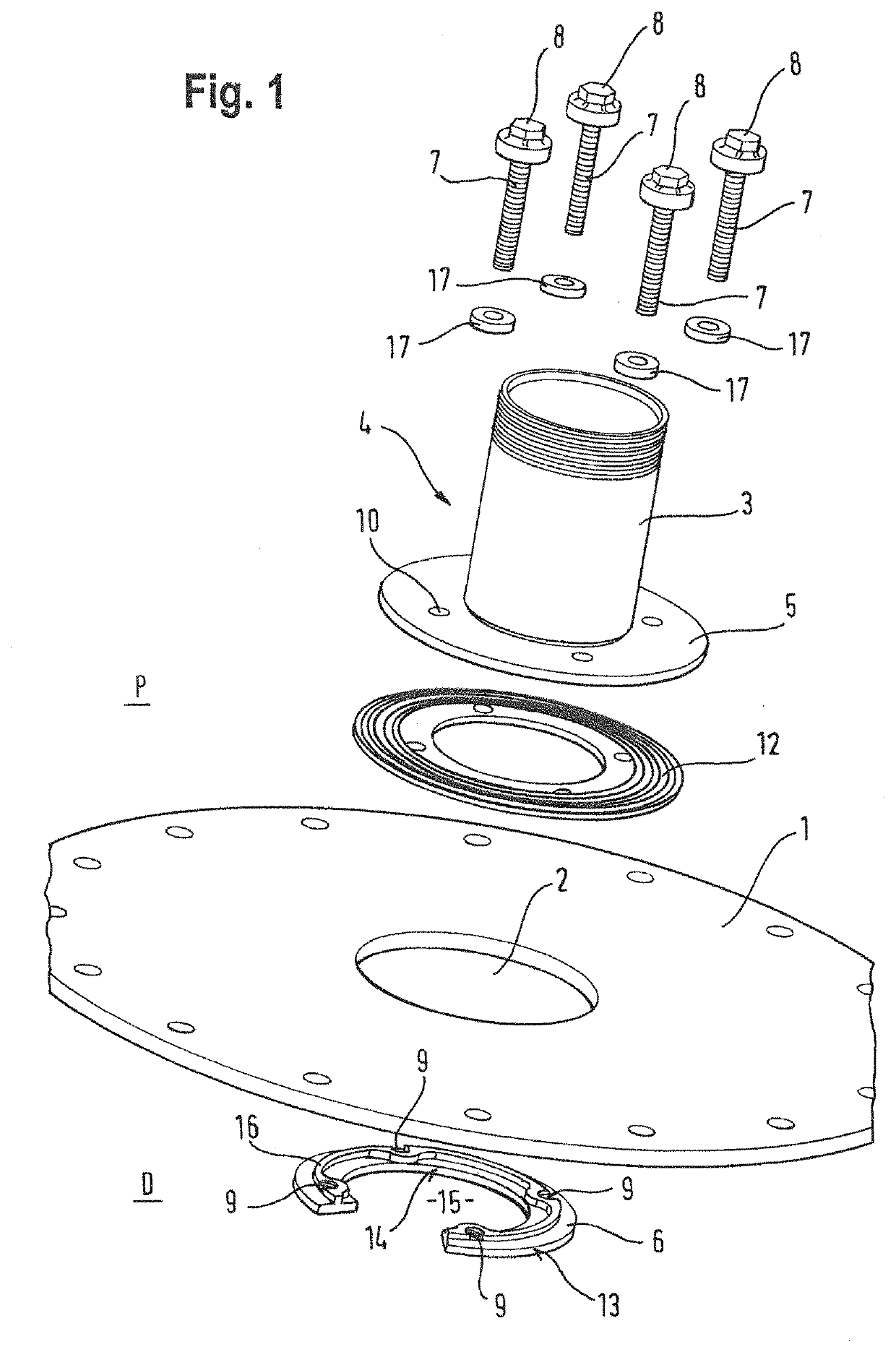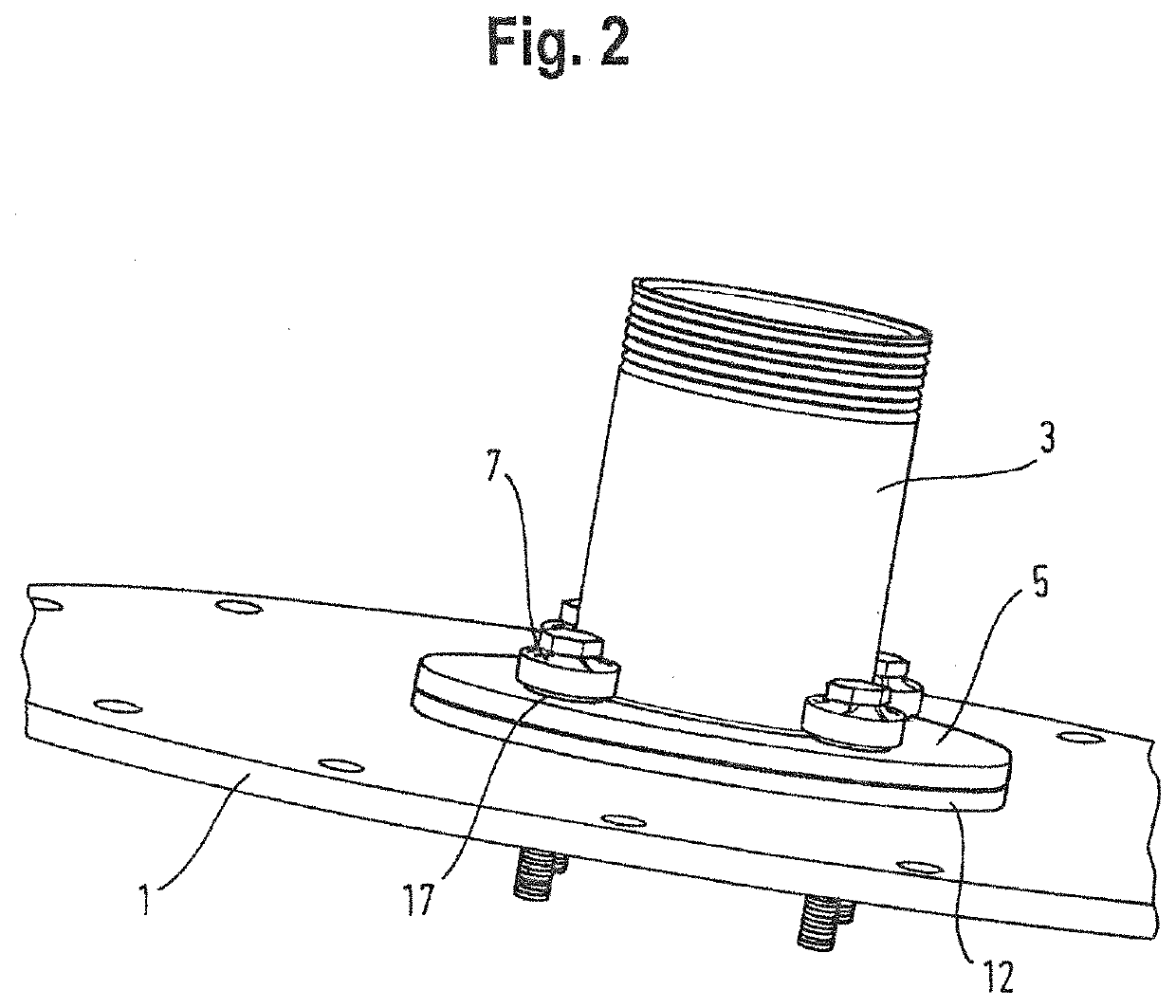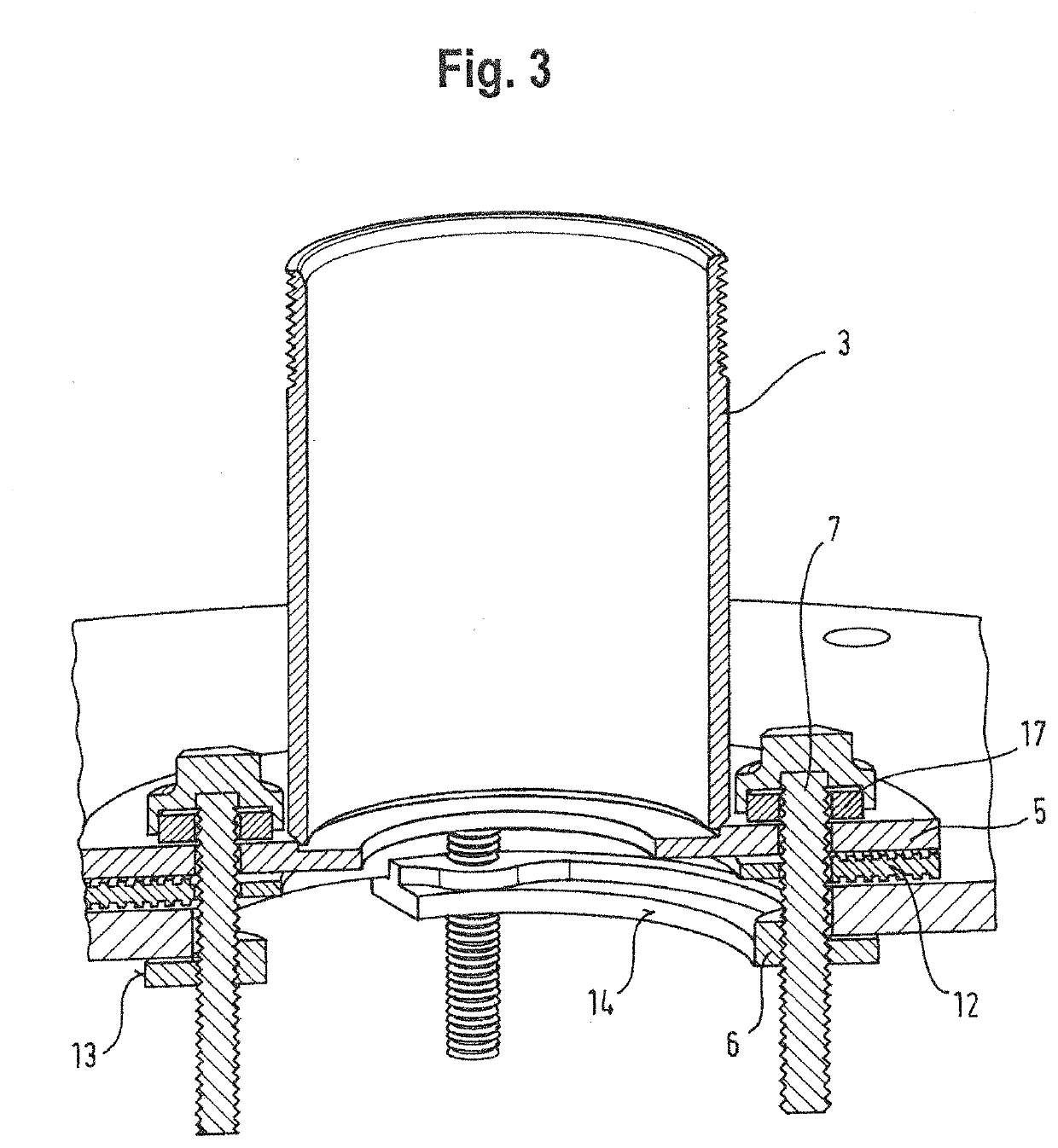System and method for providing a conduit sealingly to a through-opening in a plate-shaped construction element
- Summary
- Abstract
- Description
- Claims
- Application Information
AI Technical Summary
Problems solved by technology
Method used
Image
Examples
Example
[0023]In the drawing, like parts are referred to by like references.
[0024]FIG. 1 shows a plate-shaped construction element 1 having a through-opening 2. For the purpose of clarity, the plate-shaped construction element 1 is shown to be a circular element. However, in practice such a plate-shaped construction element is often a part of a wall in a metal construction such as a vessel or an oil platform. The plate-shaped construction element may have any further shape and be any part of a construction. FIG. 1 shows a conduit 3. Apart from the plate-shaped construction element 1, the parts shown in FIG. 1 are each part of an example of a system for providing a conduit sealingly to the through-opening 2 in the plate-shaped construction element 1, so that at least one pipe and / or cable can extend through the conduit 3 and so that after sealing the remaining space in the conduit 3 a completely sealed-off pipe and / or cable penetration through the plate-shaped construction element 1 can be o...
PUM
 Login to View More
Login to View More Abstract
Description
Claims
Application Information
 Login to View More
Login to View More - R&D
- Intellectual Property
- Life Sciences
- Materials
- Tech Scout
- Unparalleled Data Quality
- Higher Quality Content
- 60% Fewer Hallucinations
Browse by: Latest US Patents, China's latest patents, Technical Efficacy Thesaurus, Application Domain, Technology Topic, Popular Technical Reports.
© 2025 PatSnap. All rights reserved.Legal|Privacy policy|Modern Slavery Act Transparency Statement|Sitemap|About US| Contact US: help@patsnap.com



